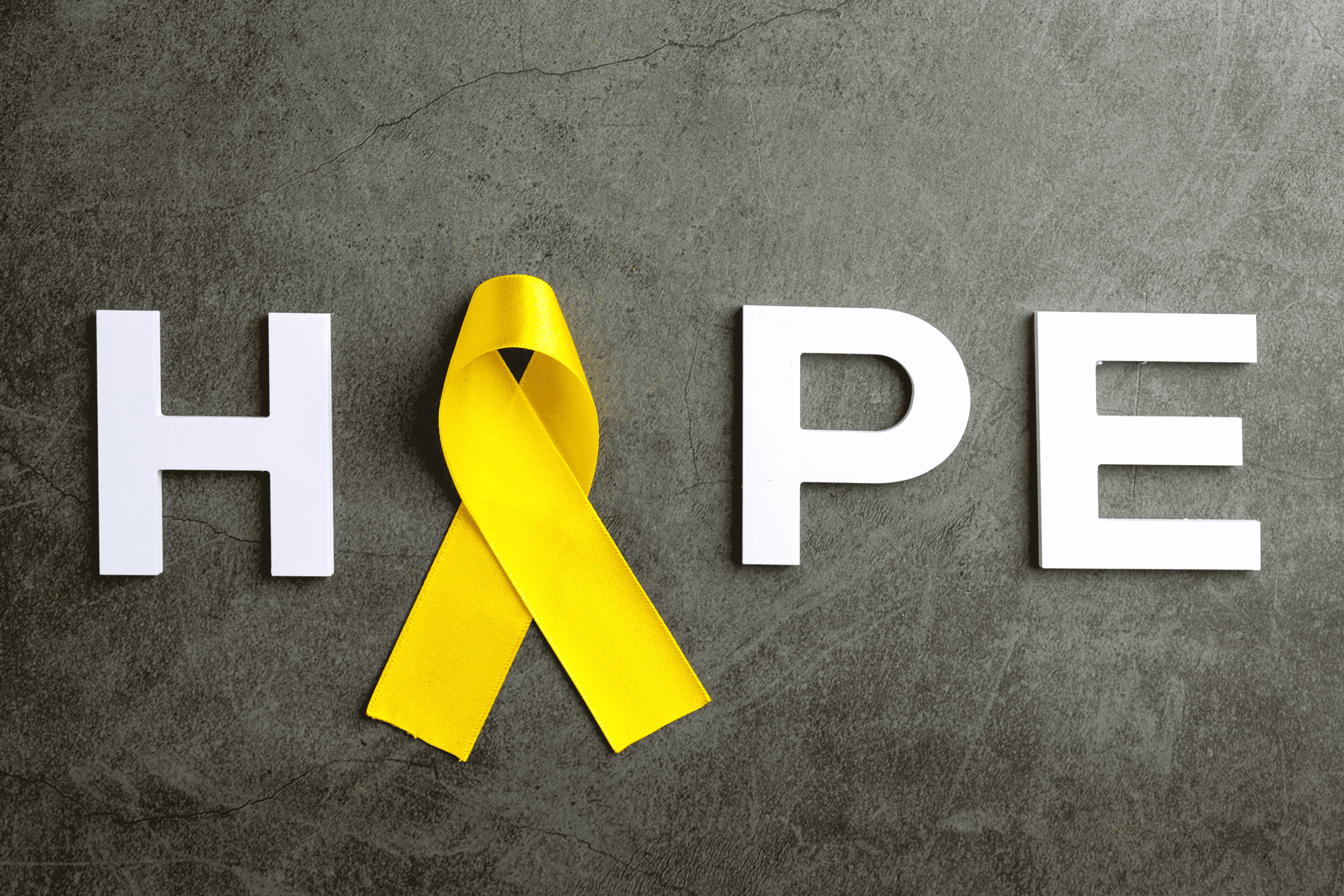If you don’t read any further than this first paragraph then I have done my job. These are the best resources that you need if you or someone that you love is currently experiencing thoughts of suicide. The most important thing you need to know is that there are places that you can go to get help. That you are loved, that you are important and that somebody is always there for you. NAMI– The National Alliance on Mental Illness has these resources that you can utilize for yourself or others in need.
Crisis Resources
- If you or someone you know is experiencing a mental health crisis, call or text 988 immediately.
- If you are uncomfortable talking on the phone, you can chat the Suicide & Crisis Lifeline at 988lifeline.org.
- You can also text NAMI to 741-741 to be connected to a free, trained crisis counselor on the Crisis Text Line.
- Need more information, referrals or support? Contact the NAMI HelpLine.

TRIGGER WARNING. Some parts of this blog may be a trigger for others. Please take care of yourself when reading this blog and know your boundaries. Set healthy limits when it comes to reading about suicide and other mental health related issues.
For me, it’s time to be vulnerable. In high school I was suicidal. I was on the verge of contemplating my actual existence. I never got to the point of having a plan laid out, but I’m pretty sure I was teetering on the edge of that cliff. A litany of traumatic things had happened to me in the beginning of my junior year that led up to this emotional crisis and I think that if one more thing had gone wrong it probably would have tipped me over the edge.
My grandmother died, my grandfather died, my best friend was in a terrible car accident, her father was killed and she was in a coma. My grades were in the toilet, probably from not being diagnosed ADD, (What did we know back then) I was, in my mother’s words, “Burning the candle at both ends”.
My candle probably had like 6 wicks. I was so involved in everything. I was working part time, writing for the school paper, on the swim team and a club diving team and acting with the school theater program. I was a white hot glittery mess! Eventually the dam just broke. I had no tools for managing all my stressors. The straw that broke the camels back was looming.
I was manifesting my anxiety and depression through stomach aches and headaches. I begged to be allowed to stay home and sleep. I was exhausted. I was so behind in school I would try anything to just be allowed to stay home. I remember the morning my parents put their foot down and were insistent I go to school. I lost it. Sobbing hysterically on my bed with my mom. I couldn’t take it anymore. I don’t remember if I asked for help or my parents just did it but, they did it and that’s all that mattered.
Dark Days Can Be Transformed
As new as they were to parenting since I was their first born child, they acted quickly and we began the LONG journey towards my healing.
Our whole family’s healing really because while there may be one family member who is identified as struggling they usually are expressing something the entire family may be dealing with.
I went into a day treatment facility which meant I showed up in the morning and left at the end of the day. While there I received individual therapy, group therapy, art therapy and was able to complete school work that was sent over from my high school.
I had access to a psychiatrist, nurse practitioners and various therapists everyday who were part of my treatment team that helped me work through my trauma.
We had family therapy too. Which my parents and a very reluctant younger brother participated in with me. If you ask my mom about that time in our lives she may get weepy, she reminisces about how bad it was, how dark things were. It was a crazy hard time but we all agree that coming out the other side as a more supportive closer family made the hard parts “worth it”.
According to the CDC and NIMH, “nearly 46,000 lives were lost to suicide in 2020 alone” When people make comments or express thoughts about suicide its called “suicidal ideation” It doens’t mean they have a current, clear plan of action in place. It can be small statements like, “why should I even try anymore”, or “no one would notice if I wasn’t even here anymore” Unchecked or left to themselves these statements can get more dangerous and detail oriented.
Suicide Prevention Month Includes Awareness
Several warning signs of suicide to look for:
- Increased alcohol and drug use
- Aggressive behavior
- Withdrawal from friends, family and community
- Dramatic mood swings
- Impulsive or reckless behavior
Suicidal behaviors are more than a cry for help, they are a psychiatric emergency.
Again, as I previously wrote about in the beginning of my blog, If you or someone you love takes part in any of the following steps, please seek immediate help from a professional.
You can now call 988 to reach the new Suicide & Crisis Hotline. The 988 number has only been around since about May of 2022.
It’s much easier to remember three numbers when in crisis. It’s why 911 works in emergency situations. A suicidal crisis i an emergency. It can be life or death.
Examples of someone in suicidal crisis may do things like:
- Collecting and saving pills or buying a weapon
- Giving away all of their possessions
- Tying up loose ends, like organizing personal papers or paying off debts
- Saying goodbye to friends and family
If you are unsure, a licensed mental health professional can help make an immediate assessment of the situation and provide assistance in taking the next steps.

Risk Factors for Suicide
According to the NAMI website again they state that, “Research has found that 46% of people who die by suicide had a known mental health condition. Several other factors may put a person at risk of suicide, including but not limited to:
- A family history of suicide
- Substance use: Drugs can create mental highs and lows that worsen suicidal thoughts.
- Intoxication: Analysis from the CDC indicates around 1 in 5 people who die by suicide had alcohol in their system at the time of death.
- Access to firearms
- A serious or chronic medical illness
- Gender: Although more women than men attempt suicide, men are 4x more likely to die by suicide.
- A history of trauma or abuse
- Prolonged stress
- A recent tragedy or loss
Supporting someone through a crisis
When a suicide-related crisis occurs, friends and family are often caught off-guard, unprepared and unsure of what to do. As a therapist I can personally tell you that when something like this happens, you are even more shocked, because you can be even harder on yourself for not seeing the warning signs as a trained professional!!! The hard thing is that the behaviors of a person experiencing a crisis can be very unpredictable, changing dramatically without warning going up and down the ladder in a flash. It’s hard to see all the parts of the puzzle at once.
There isn’t one exact way to reach out to someone who is experiencing a suicide-related crisis: NAMI says to
- Talk openly and honestly. Don’t be afraid to ask questions like: “Do you have a plan for how you would kill yourself?”
- Remove means such as guns, knives or stockpiled pills
- Calmly ask simple and direct questions, like “Can I help you call your psychiatrist?”
- If there are multiple people around, have one person speak at a time
- Express support and concern
- Don’t argue, threaten or raise your voice
- Don’t debate whether suicide is right or wrong
- If you’re nervous, try not to fidget or pace
- Be patient
Like any other health emergency, it’s important to address a mental health crisis like suicide quickly and effectively. Unlike other health emergencies, mental health crises don’t have instructions or resources on how to help or what to expect (like the Heimlich Maneuver or CPR). That’s why NAMI created Navigating a Mental Health Crisis: A NAMI Resource Guide for Those Experiencing a Mental Health Emergency, so people experiencing mental health emergencies and their loved ones can have the answers and information they need when they need it.”
If your friend or family member struggles with suicidal ideation on a day to day basis, let them know that you are there for them to talk about whatever they are going through. Make sure that you take on an open mind and take on a compassionate mindset when they’re talking with you. NAMI recommends, “Instead of “arguing” or trying to disprove any negative statements they make (“Your life isn’t that bad!”), try active listening techniques such as reflecting their feelings and summarizing their thoughts. This can help your loved one feel heard and validated.
“I statements” are things like, “It seems like you are saying…” or “ I think I am hearing you say…” Rephrasing what someone says to you shows them that you are actively listening and trying to help. Listening and being present goes a long way with someone in crisis. You don’t have to understand what they are going through but you can be there for the other person.
Make sure you tell the person you are helping that there is an entire profession of people who are trained to help people work through their feelings. Our job is to help others develop the tools to become more resilient and improve their overall mental wellness.
In the end, NAMI states that, “Psychotherapy, like cognitive behavioral therapy and dialectical behavior therapy, can help a person with thoughts of suicide recognize ineffective patterns of thinking and behavior, validate their feelings and learn positive coping skills. Suicidal thoughts are a symptom, just like any other — they can be treated, and they can improve over time.”
Suicide is never the answer. There is always hope.
To reiterate if you or someone you know is experiencing feelings or thoughts of suicide please use any and all of the following resources to get help. If you or someone you know is experiencing a mental health crisis, call or text 988 immediately.
- If you are uncomfortable talking on the phone, you can chat the Suicide & Crisis Lifeline at 988lifeline.org.
- You can also text NAMI to 741-741 to be connected to a free, trained crisis counselor on the Crisis Text Line.
Need more information, referrals or support? Contact the NAMI HelpLine.

